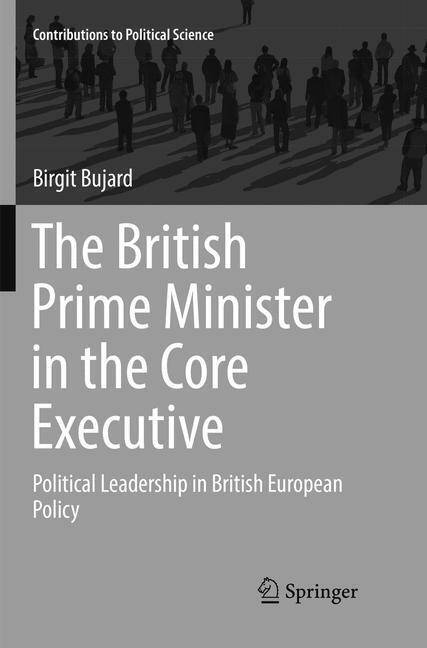
En raison d'une grêve chez bpost, votre commande pourrait être retardée. Vous avez besoin d’un livre rapidement ? Nos magasins vous accueillent à bras ouverts !
- Retrait gratuit dans votre magasin Club
- 7.000.000 titres dans notre catalogue
- Payer en toute sécurité
- Toujours un magasin près de chez vous
En raison de la grêve chez bpost, votre commande pourrait être retardée. Vous avez besoin d’un livre rapidement ? Nos magasins vous accueillent à bras ouverts !
- Retrait gratuit dans votre magasin Club
- 7.000.0000 titres dans notre catalogue
- Payer en toute sécurité
- Toujours un magasin près de chez vous
The British Prime Minister in the Core Executive
Political Leadership in British European Policy
Birgit Bujard
52,95 €
+ 105 points
Format
Description
Examines the UK prime minister's political leadership in the domestic executive
Offers a comparative study of the political leadership of James Callaghan, Margaret Thatcher, John Major and Tony Blair with regard to European monetary policy
Challenges the thesis that British prime ministers today have more power, resources and autonomy than their predecessors
Offers a comparative study of the political leadership of James Callaghan, Margaret Thatcher, John Major and Tony Blair with regard to European monetary policy
Challenges the thesis that British prime ministers today have more power, resources and autonomy than their predecessors
Spécifications
Parties prenantes
- Auteur(s) :
- Editeur:
Contenu
- Nombre de pages :
- 268
- Langue:
- Anglais
- Collection :
Caractéristiques
- EAN:
- 9783030079031
- Date de parution :
- 01-02-19
- Format:
- Livre broché
- Format numérique:
- Trade paperback (VS)
- Dimensions :
- 156 mm x 234 mm
- Poids :
- 408 g

Les avis
Nous publions uniquement les avis qui respectent les conditions requises. Consultez nos conditions pour les avis.






